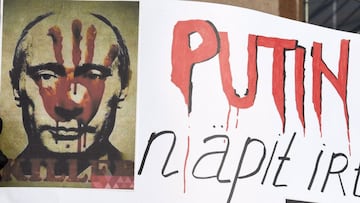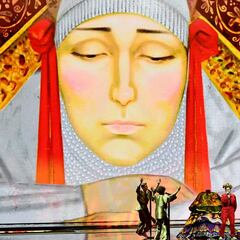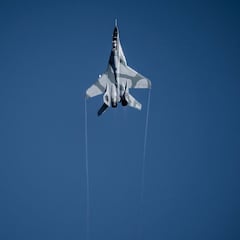How long has Putin been in power and how many presidents has Russia had?
Vladimir Putin has been the Russian leader since taking over from Boris Yeltsin pretty much without pause, and it appears that he’s not planning on leaving.

The Russian Federation was born in 1991 when the Soviet Union dissolved and the first, Boris Yeltsin, of three different presidents was elected. However, the early years of the federation were chaotic and full of financial hardship.
This laid the groundwork for the rise of Vladimir Vladimirovich Putin, a former KGB officer, to become Yeltsin’s hand-picked successor when he stepped down. Terrorist attacks purported to be carried out by terrorists from a breakaway region Chechnya gave the soon-to-be new president an excuse to quell the separatist movement there. It also gave Putin his first of two legitimate electoral wins.
Also see:
- NATO responds to Russian attack: live updates
- Former President of Ukraine lauds Ghost of Kyiv
- EBU bans Russia from Eurovision
- Russian forces take control of area surrounding Chernobyl nuclear power plant
The rise of Vladimir Putin
Starting in the mid-1980s, Vladimir Putin worked as a KGB officer in Dresden, East Germany. He was there when the Berlin Wall fell in 1989, returning to the Soviet Union in 1990 shortly before it dissolved.
He took up residence in his native St Petersburg, formally Leningrad, where he took up work in the mayoral administration in 1991 led by a former professor of his, Anatoly Sobchak. There he developed what would become the base of his power later on, making connections with various groups that would support his regime including the Russian Mafia and Oligarchs.
During the economic turmoil following the disintegration of the Soviet Union the Oligarchs had used their positions of influence to gain control of industries across the country. In a cut-throat environment they created monopolies which gave them mass wealth, that they plundered from the nation, and power. They used it in turn to control the levers of a weak government struggling to transition from communism to a free-market economy.
Putin becomes President
When Sobchak lost re-election in 1996, Putin moved to Moscow where he took up a position in the Yeltsin administration. Despite being relatively unknown, within a year he was part of the Presidential Staff and in 1999 was named Prime Minister and Boris Yeltsin’s hand-picked successor to run in the presidential elections the following year. Just months later, on New Year’s Eve, Yeltsin unexpectedly stepped down making Putin acting president of the Russian Federation.
He handily won his first term as president in 2000 on the back of Russia’s successful campaign to quell the separatist movement in Chechnya. He would go on to win re-election in 2004 with an even larger majority of the vote. However, as he was consolidating authoritarian power under the Russian constitutional democratic system he ran into a glitch, term limits.
Putin gives up presidency but holds onto power
Under the post-Soviet constitution presidents could only hold two consecutive terms in office, but there is no limit on the number of terms in total. So Putin found a workaround changing places with his First Deputy Prime Minister Dmitry Medvedev, who was elected president in 2008 becoming Russia’s third president. Conveniently, he proposed that whoever was elected in 2012 should have more time in office and extended the four-year term to six years.
Medvedev kindly proposed that Putin be the candidate for president in the 2012 election in accordance with a deal the two had previously worked out. Putin was elected once again to be president, technically Russia’s fourth, but there were widespread accusations of vote-rigging. Not surprisingly, he won re-election in 2018, again under questionable circumstances after opposition candidates were sidelined.
Putin could be president until 2036
Related stories
The constitutional changes in 2008 did not remove the two-term barrier that Putin would have encountered in 2024. So, in 2020 a barrage of constitutional changes were proposed, and tucked in among them was one giving him the opportunity to serve two additional consecutive six-year terms.
With his ruthless crushing of dissent and eliminating political opposition, barring some unforeseen occurrence, Vladimir Putin is dug in like an Alabama tick and will remain in office until 2036. Whether he chooses to leave then, by which time he’ll be 84 years old, he doesn’t have to worry about criminal prosecution, in Russian at least. In 2020 Putin signed a bill giving former presidents and their families immunity for anything they’ve done during their lifetimes.


